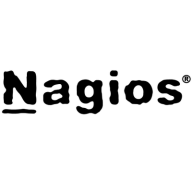

Alluvio AppResponse and Nagios XI are competing products in the network monitoring category. Alluvio AppResponse seems to have the upper hand in detailed traffic analysis, while Nagios XI leads in integration flexibility.
Features: Alluvio AppResponse offers detailed traffic analysis, application performance optimization, and real-time troubleshooting. Nagios XI provides infrastructure monitoring, extensive reporting, and visualizations with strong customization capabilities.
Room for Improvement: Alluvio AppResponse could improve in expanding plugin support, enhancing integration options, and lowering initial costs. Nagios XI may benefit from simplifying its setup process, refining real-time data analysis features, and improving user interface intuitiveness.
Ease of Deployment and Customer Service: Alluvio AppResponse provides an easy deployment process with reliable customer support, facilitating quick setups. Nagios XI's customizable nature requires more setup time but offers comprehensive documentation and community support.
Pricing and ROI: Alluvio AppResponse has a higher setup cost but offers significant ROI through its advanced analysis capabilities. Nagios XI, with affordable options from its open-source roots, delivers excellent ROI for businesses prioritizing integration without high initial expenses.


Alluvio AppResponse provides fast packet capture and storage that feeds intelligent network and application analysis with fast troubleshooting workflows to speed problem diagnosis and resolution. AppResponse delivers full stack application analysis—from packets to web pages - enabling you observe all network and application interactions as they cross the wire, whether they are encrypted or not. Using powerful, flexible network and application analytics and workflows, AppResponse speeds problem diagnosis and resolution, helping you get to answers fast
Nagios XI provides monitoring of all mission-critical infrastructure components, including applications, services, operating systems, network protocols, systems metrics, and network infrastructure. Third-party add-ons provide tools for monitoring virtually all in-house and external applications, services, and systems.
Nagios XI uses a powerful Core 4 monitoring engine that provides users with the highest levels of server monitoring performance. This high degree of performance enables nearly limitless scalability and monitoring powers.
With Nagios XI, stakeholders can check up on their infrastructure status using the role-based web interface. Sophisticated dashboards enable access to monitoring information and third-party data. Administrators can easily set up permissions so users can only access the infrastructure they are authorized to view.
Nagios XI Benefits and Features
Some of the benefits and top features of using Nagios XI include:
Reviews from Real Users
Nagios XI stands out among its competitors for a number of reasons. Several major ones are its integration options and monitoring abilities, as well as its alerting features.
David P., a senior DevOps engineer at EML Payments Ltd, writes, “We use Nagios as a network discovery tool. We use Nagios to maintain our uptime statistics and to monitor our services. It has allowed us to be much more sophisticated in our monitoring and alerting.”
An IT-OSS manager at a comms service provider notes, “Nagios XI has a custom API feature, and we can expose custom APIs for our integration. This is a great feature.”
We monitor all Network Monitoring Software reviews to prevent fraudulent reviews and keep review quality high. We do not post reviews by company employees or direct competitors. We validate each review for authenticity via cross-reference with LinkedIn, and personal follow-up with the reviewer when necessary.